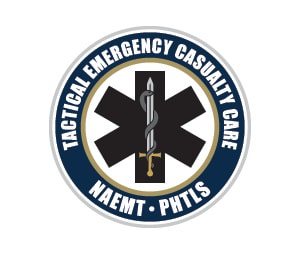- PRODUCTS
- >
- TRAINING DIVISION
- >
- TRAINING
- >
- Tactical Emergency Casualty Care (TECC) Course
Tactical Emergency Casualty Care (TECC) Course
The Tactical Emergency Casualty Care (TECC) program is based on the principles of Tactical Combat Casualty Care (TCCC) and meets the guidelines established by the Committee on Tactical Emergency Casualty Care (Co-TECC). The course teaches civilian tactical EMS; any EMS practitioner called upon to respond to a mass casualty or active shooter event.
TECC uses lessons learned from our military and applies them to the civilian world of tactical medicine.This 16-hour course covers topics designed to decrease preventable death in the tactical situation. Topics include: Hemorrhage control; surgical airway control and needle decompression; strategies for treating wounded responders in threatening environments; caring for pediatric patients; and techniques for dragging and carrying victims to safety.
At the core of the TECC program are three distinct phases that have been well-proven by TCCC-trained personnel in the war against terrorism in Iraq and Afghanistan. The phases are as follows:
- Direct Threat Care
- Care that is rendered while under attack or in adverse conditions.
- Indirect Threat Care
- Care that is rendered while the threat has been suppressed, but may resurface at any point.
- Evacuation
- Care that is rendered while the casualty is being evacuated from the incident site.
TECC focuses on the medicine during these phases of care and provides guidelines for managing trauma in the civilian tactical or hazardous environment. While TECC has a tactical slant, it takes an all-hazards approach to providing care outside the normal operating conditions of most EMS agencies, such as responding to a mass casualty or active shooter event.
Tactical Emergency Casualty Care (TECC) teaches EMS practitioners and other prehospital providers how to respond to and care for patients in a civilian tactical environment. It is designed to decrease preventable deaths in a tactical situation.
The 16-hour classroom course covers the following topics:
- Hemorrhage control;
- Surgical airway control and needle decompression;
- Strategies for treating wounded responders in threatening environments;
- Caring for pediatric patients; and
- Techniques for dragging and carrying victims to safety.
Provider Course: 16-hour classroom course for EMTs and paramedics. Upon successful completion of the course, students receive a certificate of completion, a wallet card recognizing them as TECC providers for 4 years, and 16 hours of CAPCE credit.


